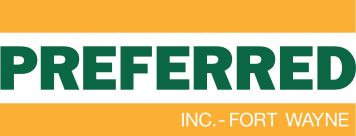Handling the Painting Project in Progress and Possible Downtime
PART 7
Every industrial painting project involves some downtime. It’s usually best to “bite the bullet” and let this play out naturally, reduce foot traffic in the area and removing barriers to entry in the area to be painted.
The more you can control congestion around the project site, the easier it is for the contractors to perform prep and painting quickly. The savings in time can make a significant difference to your final expenses.
That said, there are some ways to minimize downtime and maximize efficiency:
- Safety: Preventing reportable safety incidents among your personnel during painting.
- Communication: Staying on the same page with your contractor throughout a project.
What Safety Precautions Are Necessary During a Project?
When it comes to safety, your contractor will do the lion’s share of the work.
They bring personal protective equipment for their team members, manage safety issues around all equipment and utilities as it relates to them, and give you information you need to know about hazards that could affect your personnel.
On your end, observe these best practices:
Plan Out Areas of Limited Access
Early in the process, your contractor should have a fair idea what needs to be done and in what order. Using this information, do what you can to limit employee access, redistribute workloads, and reduce foot traffic through areas as they become the active focus of the project.
Make Announcements to Employees
At the outset of any project, make sure everyone knows what expectations apply to them. If members of your team don’t know what’s going on, honest mistakes are much more likely. You should occasionally update employees as progress warrants.
Update Personal Safety Guidelines
It might be inevitable that work must continue around an area where painting is being done. When this happens, call in your safety and compliance team leaders to ensure all precautions are enforced – including additional personal protective equipment where needed.
Maintaining Good Communication During Your Project
Communication between the client and contractor is essential to success. The catch is, it’s up to the client to set the standard. If you don’t show an interest in regular communication, contractors may assume you expect them to “just get it done” with a minimum of interaction.
The best industrial painting firms can, indeed, be left largely on their own to do the work.
Still, it’s a good idea to maintain regular communication – especially if you haven’t worked with a particular company before. Not only does this help prevent oversights, but it puts unscrupulous characters on notice that you are paying attention.
Here’s how you should set up communication to maximize effectiveness:
Daily Check-Ins
A morning check-in is a good idea since it gives you the information you need for any updates to your employees. It also keeps the lines of communication open, so complications or problems are more likely to be addressed up front. This is best for both you and your contractor.
Bi-Monthly Progress Reports
It’s often hard to see the forest for the trees, so a major update every two weeks helps measure project progress more accurately. Contractors should have clear, concise answers about what they’ve achieved, what’s up next, and what issues – if any – might be relevant.
“Surprise” Inspections
It never hurts to drop in for a quick visit now and then. Even when everybody has the best of intentions, days drag on and oversights can happen. When it is obvious that you’re invested and aware of the process, contract personnel are much more likely to succeed.
Red Flags To Be Aware Of During Any Painting Project
Good communication from the very start helps to ensure all issues are addressed. In a well-run project, there should be few surprises. Still, you should keep an eye out.
Problems during a project usually take one of three forms:
- Aesthetics: Progress is made, but “completed” areas don’t look as good as they should.
- Time frame: Progress is too slow, with the blame going to equipment or staffing issues.
- Quality: Machine operators notice damage or equipment malfunctions in finished areas.
Whenever these issues present themselves, it’s essential they get resolved right away – don’t wait until everything else is done. Additional time, equipment usage, or other problems caused by contractor oversight should be covered by your contract.
Operating Temperatures Matter For Paint
On a final note, be sure your facilities manager knows the operating conditions your paints need.
While temperature can’t be helped at some facilities, most plants have granular control over working temperatures. Each type of paint dries best within a specific temperature range and under relatively low humidity.
Daily updates from your contractor should include all the information you need on temperatures – and when maintaining a given temperature is no longer necessary.
If you need help determining the best way to clean and prepare surfaces for painting, then contact us for a free painting consultation.
Project In Progress: Right Way, Wrong Way
Jim forgets to let his employees know about the painting in progress until the day before. Since there’s no time to make areas accessible for painting, he ends up having to make costly choices between productivity or keeping his project on track. That disrupts work for everyone.
Rob makes communication a priority. With regular updates from his contractor, he is able to keep his employees busy even when it’s crucial they stay out of certain areas during painting. He makes time to inspect the contractor’s work, so any issues get addressed early.
Remember:
- Check-ins, progress reports, and snap inspections keep everyone on the same page.
- It’s up to you to keep your team informed so they can cooperate with your project.
- If you’re not satisfied with your contractor’s performance, bring it up right away.

